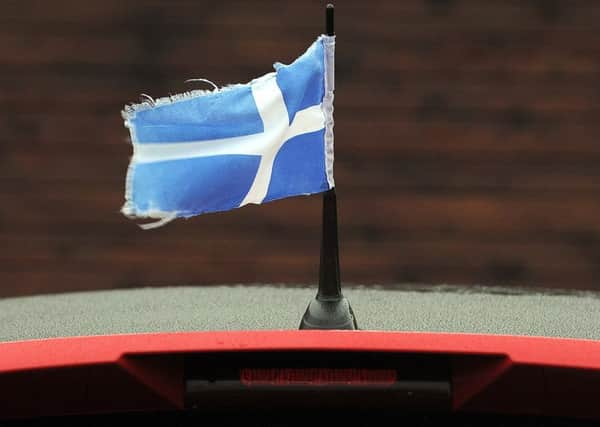Philip Tibbetts: Communities flying their own flags benefits Scottish identity


However, it is certainly true that since Caithness started its campaign for a flag in 2014 that more communities have followed suit every year. This is no doubt as a result of the benefits to those communities becoming more and more evident.
There are many reasons that a community may decide to develop a flag, with each community having its own unique circumstances. However in my experience there are three top-level types of benefit that communities who develop flags enjoy.
Advertisement
Hide AdAdvertisement
Hide AdThe first is perhaps the most readily apparent, the benefit around internal identity. A flag provides the community with a symbol that they can rally around and share, thus promoting their sense of togetherness.
Obviously this is apparent during times of local celebration, much as the national flag is also used in such circumstances. However it is important to recognise that the positive power of flags extends to times of hardship as well. Barra is a notable example where in the aftermath of the Manchester Arena attack their flag was used very prominently on the island to express their sense of loss and solidarity.
Secondly there is a notable benefit for communities regarding the external visibility a flag can bring for their area. In 2004, the then Scottish Executive found that the Saltire was the best symbol for promoting Scotland abroad, and for the same reason a flag can prove to be a strong and versatile brand for any sub-national community too.
The well-established Shetland and Orkney flags are often seen on car stickers, badges and even on the packaging of other merchandise as well as actual flags. Every time the flags are used in this way they can act as a powerful branding for those areas. However, even younger flags have proved that they can achieve similar benefits – the Caithness flag appearing on the Wick Academy FC team strip, for example.
Finally, there is an overall benefit to our sense of national identity too. Like a patchwork quilt the individual pieces need to be preserved and promoted to keep the whole fabric in good condition.
There are many places around the world that make good use of sub-national and national identities to complement each other. However, Scotland has one of the richest histories of celebrating not only national symbolism but those of its people and places too, and it is renowned for its love of ceremony. So much so that it is clear that Scotland’s sense of localism is core to its historic sense of national identity and understanding of itself.
This can be seen in many of the unique aspects of Scottish culture and symbolism. Start with a type of symbol so associated with our country – tartan. The huge range of tartans is something that enhances our understanding of the country rather than undermining it. These cover places and communities, as well as tartans for individuals, families and clans.
It is a feeling of belonging to one of our iconic names, families or clans that is another important part of historic Scottish identity. This has given rise to a distinctive character for heraldry in Scotland with unifying themes for particular surnames linking individuals’ personal arms in a display of unity. In Scottish heraldry itself there are many examples of historic emblems associated with not only clans but regions themselves. For instance the lymphad (galley) is emblematic of the islands and many of the families that hail from there. The Caithness galley even made its way onto their community flag. And there are many more; from the Dundonian lilies to the Lochaber axes.
Advertisement
Hide AdAdvertisement
Hide AdIn his book Scots Heraldry, former Lord Lyon Sir Thomas Innes notes that the general uptake of heraldry in Scotland is historically far higher per capita than in England. This is something he ties to the sense of family and clan belonging. Though to have personal arms recognised with the ancient authority charged with protecting the country’s national symbols, the Court of the Lord Lyon, only further exemplifies the link between sub-national identities and our sense of Scottishness.
The Honorary Vexillologist role within the Court of the Lord Lyon will be assisting the development of community flags and also to support the continuing enrichment of our national symbolism through helping to develop civic and personal heraldry. It is this richness that not only deepens our national identity but also gives it a healthy breadth as well. It is absolutely no surprise that flags have taken off so strongly in recent years as they are only one more instance of an important foundation to our national identity, and a lot of the honorary vexillologist’s focus will be given over to them.
Each type of symbol mentioned plays a significant part in realising this, but each does this to their own strengths. Community flags have found a unique place in providing their people with a recognisable, versatile and highly visible symbol that is free to use by all. This makes these flags not only perfect to be seen next to the Saltire but they enrich it too. It is to Scotland’s great pride that the Court of the Lord Lyon continues a centuries long duty of protecting our national symbols but is also able to empower the nation’s communities in developing their own.
Philip Tibbetts is honorary vexillologist for Scotland’s heraldic authority, the Court of the Lord Lyon.